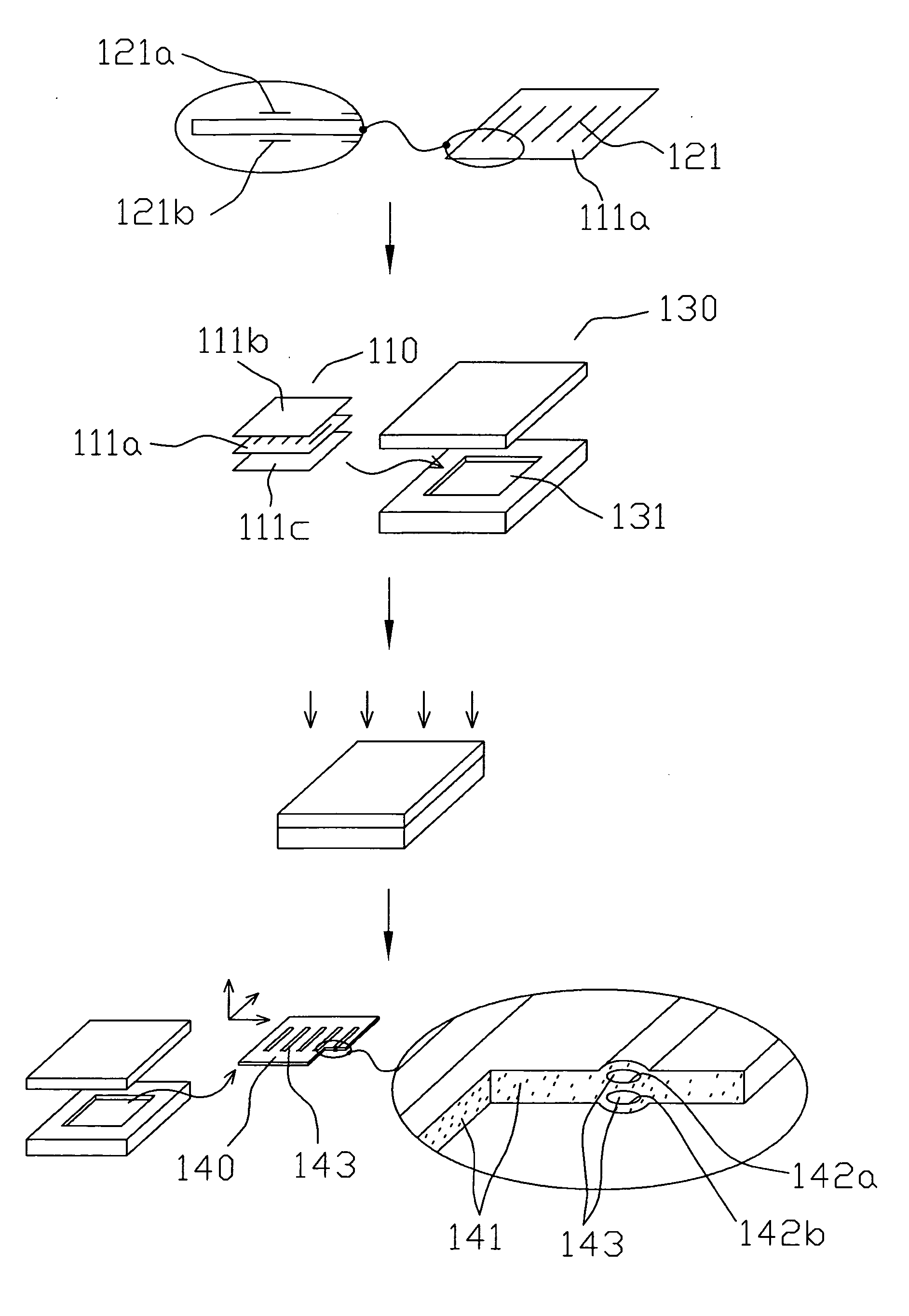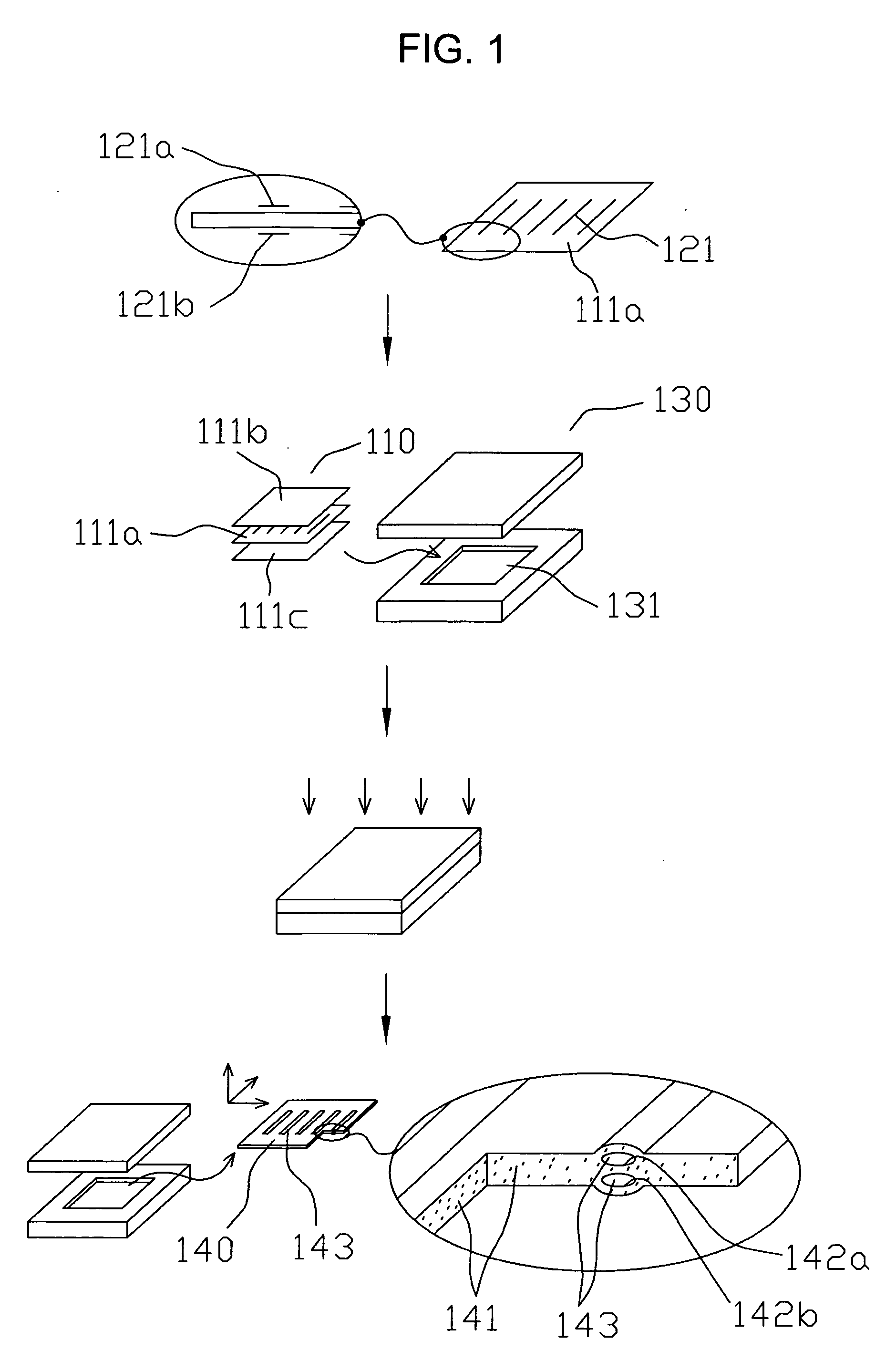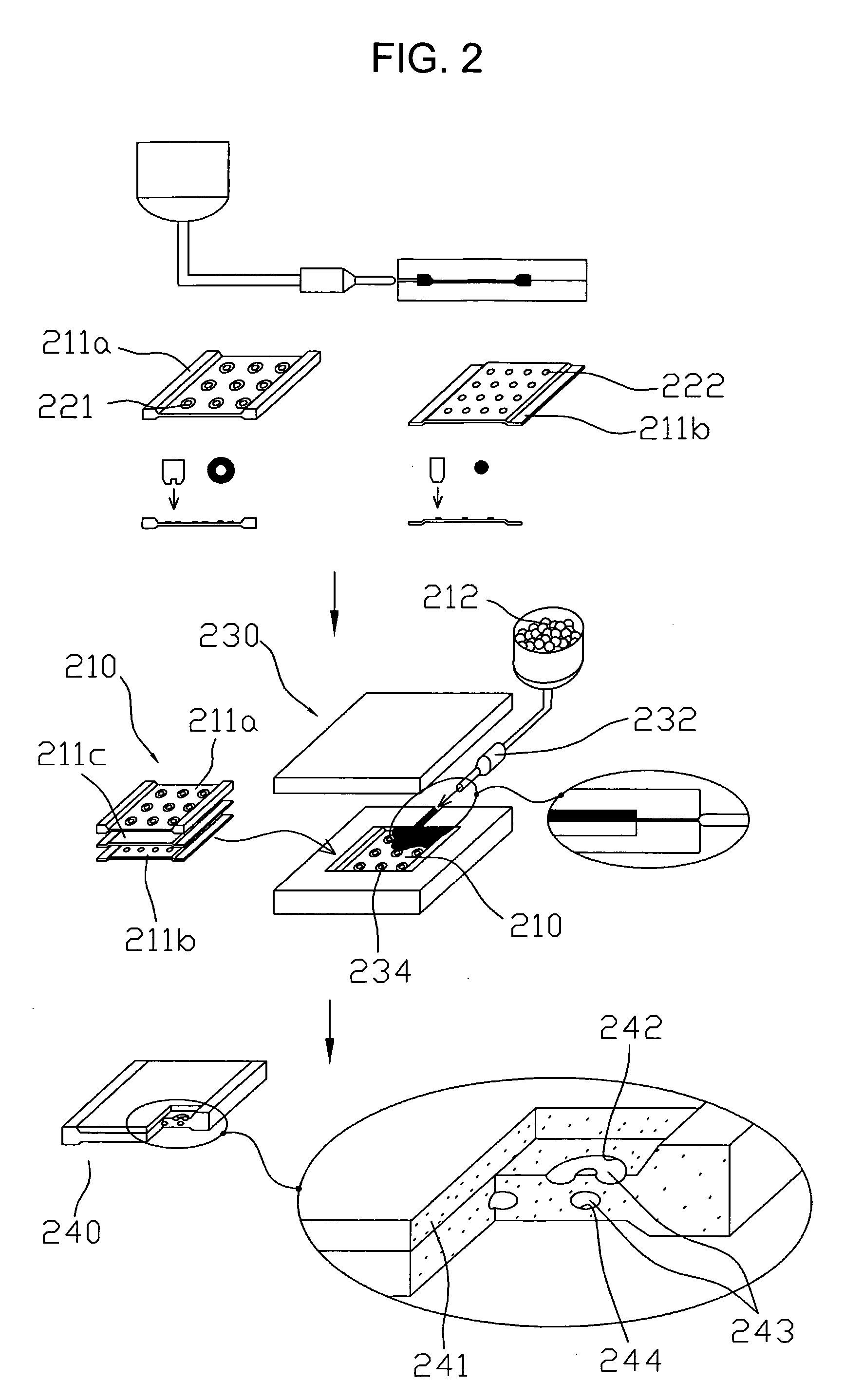Crosslinked foam which has inner-cavity structure, and process of forming thereof
a cross-linked foam and inner cavity technology, applied in the field of cross-linked foam, can solve the problems of low throughput, degradation of design and quality, and the inability of the cross-linked foaming method to make the density differentiation inside the finalized foam,
- Summary
- Abstract
- Description
- Claims
- Application Information
AI Technical Summary
Benefits of technology
Problems solved by technology
Method used
Image
Examples
first embodiment
[0095]FIG. 1 illustrates a manufacturing process of a cross-linked foam having more than one internally-formed surface according to a first embodiment of the present invention.
[0096] Material Preparation: Three sheets of film type materials 111a, 111b and 111c having a foaming rate of 150%, which are calender-molded, are cut to have the size of thickness 2 mm, width 100 mm, and length 100 mm.
[0097] Interfacing Pattern Formation: A silkscreen printing is performed on both sides of the first film type material 111a among the three sheets of film type materials 111a, 111b and 111c. Interfacing patterns 121a and 121b are printed on the first film type material 111a in a thickness of 70 micrometers by using a urethane-resin-based ink and the resultant structure is dried at a temperature of 60 degrees Celsius for 15 minutes. The interfacing patterns 121a and 121b have five-striped pattern shapes each having a width 2 mm and a length 50 mm, and each of the five-striped pattern shapes are...
second embodiment
[0100]FIG. 2 illustrates a manufacturing process of a cross-linked foam according to a second embodiment of the present invention. The second embodiment is a modification of the first embodiment in which a double-layered internally-formed surfaces are formed in the foam.
[0101] Material Preparation: Three sheets of white materials 211a, 211b, and 211c having a foaming rate of 150% are injection-molded.
[0102] Interfacing Pattern Formation: Each surface of the first and second white materials 211a and 211b is pad printed to form first and second interfacing patterns 221 and 222. The first interfacing pattern 221 is formed on the first white material 211a, and has nine doughnut type patterns each of which has an inner circle having a diameter of 2 mm arranged at the center of the doughnut type pattern and an outer circle having a diameter of 6 mm. The second interfacing pattern 222 is formed on the second white material 211b, and is designed with sixteen circle patterns each having a ...
third embodiment
[0105]FIG. 3 illustrates a manufacturing process of a foam according to a third embodiment of the present invention. The third embodiment is a modification of the second embodiment.
[0106] Material Preparation: Two sheets of materials 311a and 311b having a foaming rate of 150% are extrusion-molded or calender-molded. Each of the materials has a width of 40 inches, a length of 10 yards, and a thickness of 2 mm.
[0107] Interfacing Pattern Formation: Peanut-shaped patterns 321 constituted by a pair of adjacent circles each of which has a diameter 6 mm, are arranged on the first material 311a. Each of the adjacent circles of the peanut-shaped patterns 321 has a centric circular opening having a diameter of 2 mm. Each of the peanut-shaped patterns are printed using a epoxy-resin-based ink on the first material 311a at a thickness of 40 micrometers with a margin of 10 mm from the up-and-bottom and left-and-right neighboring peanut-shaped patterns, and thermal-dried at a temperature of 60...
PUM
| Property | Measurement | Unit |
|---|---|---|
| Pressure | aaaaa | aaaaa |
| Structure | aaaaa | aaaaa |
| Surface roughness | aaaaa | aaaaa |
Abstract
Description
Claims
Application Information
 Login to View More
Login to View More - R&D
- Intellectual Property
- Life Sciences
- Materials
- Tech Scout
- Unparalleled Data Quality
- Higher Quality Content
- 60% Fewer Hallucinations
Browse by: Latest US Patents, China's latest patents, Technical Efficacy Thesaurus, Application Domain, Technology Topic, Popular Technical Reports.
© 2025 PatSnap. All rights reserved.Legal|Privacy policy|Modern Slavery Act Transparency Statement|Sitemap|About US| Contact US: help@patsnap.com



